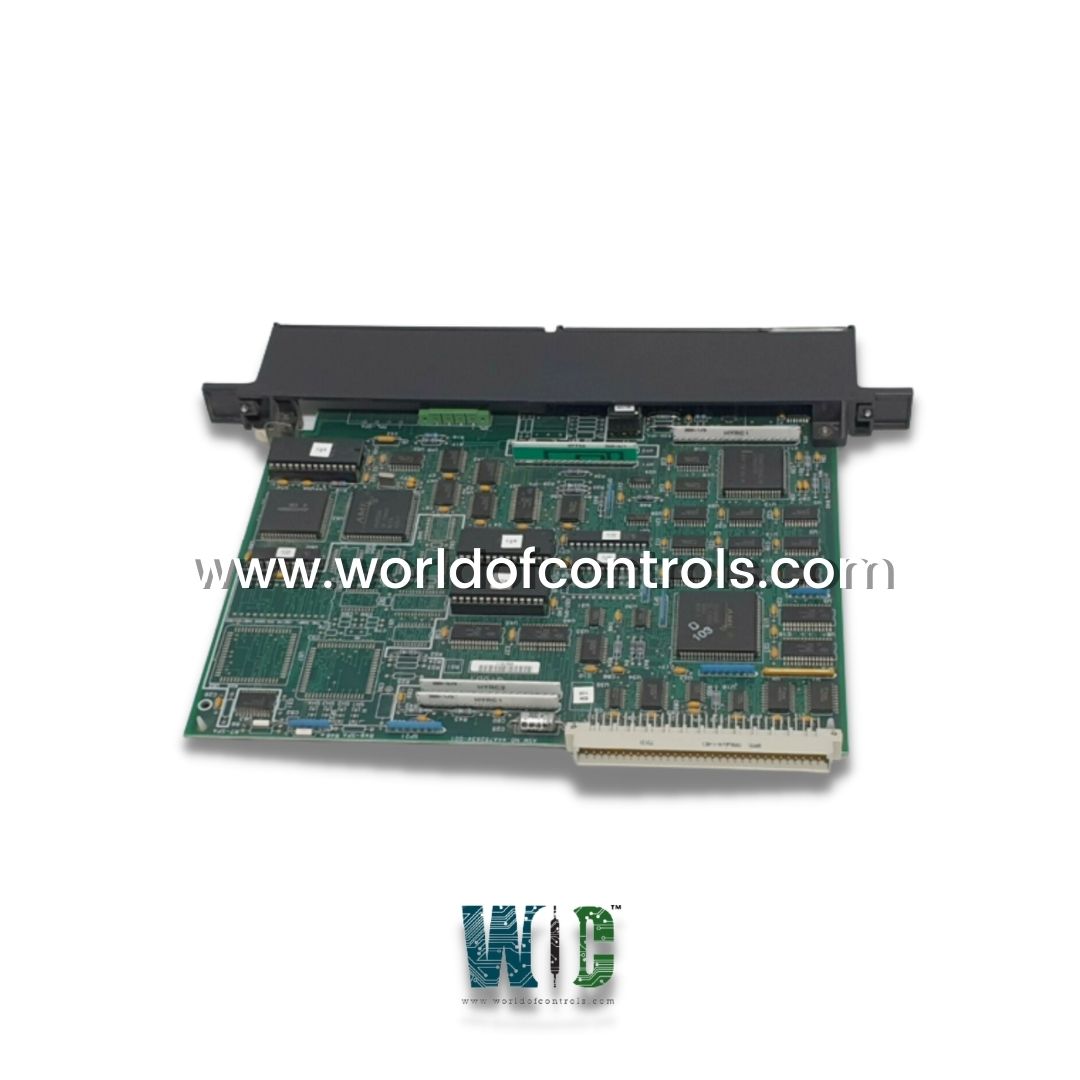SPECIFICATIONS
Part No.: IC687BEM731
Manufacturer: General Electric
Backplane Voltage: 5 Volts DC
Backplane Current: 1.3 Amps
Location: PACSystems RX7i or Series 90-70 PLC Racks
Baud Rate: 153.6, 38.4, or 6.8 KiloBaud
No. of channels: 1
Devices: 32 at 153.6 Kbaud
Serial Ports: 1 (Hand Held Monitor Port)
Current Required: 1.3 Amps from Backplane
Country of Manufacture: United States of America (USA)
Product Type: Bus Controller Module
Availability: In Stock
Series: VersaMax
Functional DeNscription
IC687BEM731 is a Bus Controller Module developed by GE. The Genius Bus Controller is designed to work with Series 90-70 and PACSystems RX7i systems. This device is integral to managing and facilitating communication within automation networks, allowing for efficient data exchange between various devices on the Genius communications bus. Serves as a central node in the communication network, interfacing with up to 31 additional devices and ensuring streamlined and effective control over complex automation systems.
Device Compatibility and Connectivity
- Compatible with a wide range of devices, which makes it highly versatile and essential for large-scale automation systems. It can interface with various Genius I/O blocks, programmable logic controllers (PLCs), Remote Drops for Series 90-70 systems, Versamax I/O stations, Field Control stations, and multiple host devices requiring data packets (datagrams) and Global data communication. This broad compatibility ensures that the Bus Controller can be integrated seamlessly into different system configurations, allowing the flexibility to accommodate various types of hardware, communication protocols, and specific system requirements.
- Reliable choice for applications across multiple industries, ranging from manufacturing and process control to critical infrastructure. It ensures that diverse devices can communicate effectively, enhancing the system's overall flexibility and interoperability.
Communication Channels and Bus Length
- It is designed to support communication through the Genius bus, enabling communication with a maximum of 31 devices. This capability makes it suitable for large and complex systems that require multiple devices to interact over a single communication network. The communication channel rates can reach up to 153.6 kbaud when the maximum number of devices is connected. This high data transfer rate ensures fast and efficient communication between devices, even in systems with a large number of nodes.
- The device supports several bus types, including Daisy-chain configurations, shielded twisted pair (STP) cables, Twinax cables, and potentially fiber optic cables. This variety in supported bus types gives system designers the flexibility to choose the most appropriate medium for their installation based on environmental factors, cable distance, and noise immunity.
- The maximum bus length supported is 7500 feet (approximately 2,286 meters), allowing for extensive system layouts across large facilities. However, it is important to note that the communication rate may decrease as the bus length increases, especially for longer distances. This gives engineers the flexibility to design large-scale systems while understanding the trade-offs between distance and data transfer speed.
Features and Performance
- Offers a range of features designed to enhance performance and reliability in automation systems.
- Key features include I/O diagnostics for monitoring and troubleshooting, support for redundant systems to ensure continuous operation in the event of a failure, and the ability to handle datagrams and Global data transmissions.
- Additionally, the device is equipped with a connection port for a portable monitor, facilitating easy monitoring and configuration, as well as a serial interface port for further connectivity options.
Device Placement and Installation
- It can be installed in any slot on the Genius bus, but optimal performance is achieved when the device is placed in a location that corresponds to its programmed device number.
- Typically, bus controllers are assigned device number 31. Installation involves powering down the rack, securely fastening the controller to the backplane, and connecting the various bus connections. Proper installation and device placement are crucial for ensuring reliable operation and communication within the automation system.
Configuration and Programming
- To configure use the Machine Edition Logic Developer 5.0 software with the second service pack or later.
- This software provides the tools necessary for setting up and managing the device, ensuring that it is properly integrated into the automation network.
- Each device on the Genius bus must be programmed individually, either through the programming software or by using Write Configuration COMMREQS. This process ensures that all devices are correctly configured and capable of effective communication within the network.
The WOC team is always available to help you with your Mark I and II requirements. For more information, please contact WOC.
Frequently Asked Questions
What is IC687BEM731?
It is a Bus Controller Module developed by GE under VersaMax series.
What types of devices are compatible?
It is compatible with several types of devices, including Genius I/O blocks, other programmable logic controllers, Remote Drops for Series 90-70 systems, Versamax I/O stations, Field Control stations, and other host devices requiring datagrams and Global data for communication.
What are the communication rates and maximum bus length supported?
When the maximum number of devices is connected, communication channel rates can reach up to 153.6 kbaud. The device supports a maximum bus length of 7500 feet. However, it's important to note that communication rates may decrease as the bus length increases.
What bus types are supported?
It supports several bus types, including Daisy-chain, shielded twisted pair (STP) cables, Twinax cables, and potentially fiber optic cables. This flexibility allows for various system designs and network configurations.
What features does it offer?
It includes features such as I/O diagnostics, support for redundant systems, datagrams and Global data transmissions, a connection port for a portable monitor, and a serial interface port. These features enhance the device’s functionality and ease of use in automation systems.
